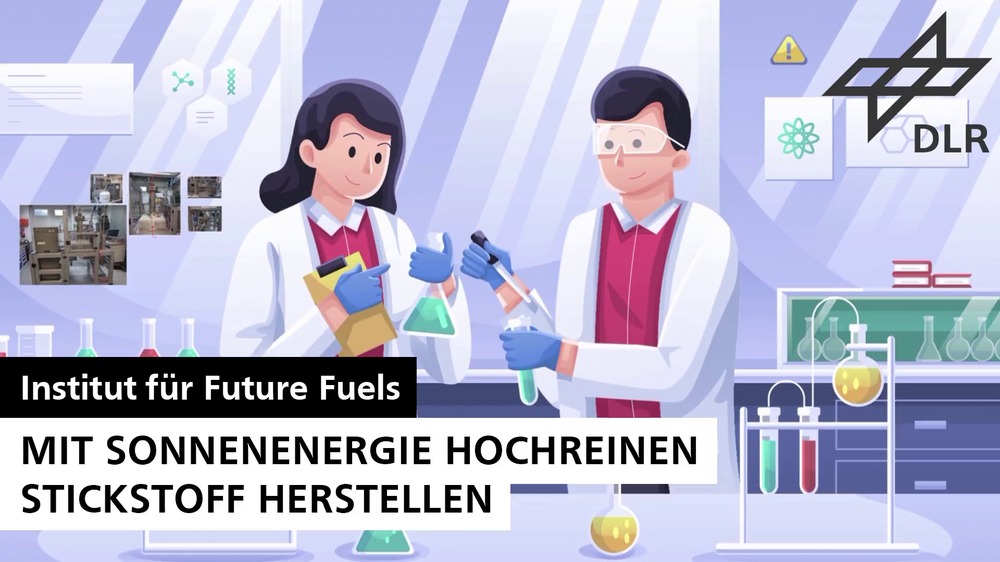SolaGrAm

Federico Respini
Using air and sun to produce sustainable ammonia
Duration: 15.6.2024 - 14.6.2027
Finding solutions for environmentally friendly ammonia is one of the greatest challenges of our time in terms of global nutrition. Ammonia is used as a fertiliser and as a basis for fertilisers. At the same time, it is becoming increasingly important as a fuel, for example in shipping. However, its conventional production is responsible for 1.5 percent of global CO2 emissions, making it one of the largest emitters.
The SolaGrAm project aims to show that the production of nitrogen – a component of ammonia – can be achieved using solar energy. There have already been initial shifts towards more sustainable ways of producing ammonia, in particular by replacing the conventional production of hydrogen – also a component of ammonia – with electrolysis using green electricity.
However, the production of hydrogen through conventional methane reforming also produces nitrogen, which can be fed into the Haber-Bosch process to produce ammonia. This is not the case with electrolysis or thermochemical water splitting. Only pure hydrogen is produced here. An additional source of nitrogen is therefore required. Modern nitrogen production processes are based on cryogenic distillation – the decomposition of air at very low temperatures – which consumes a lot of energy and emits CO2. SolaGrAm aims to offer an alternative here.
Course of the project
The predecessor project SESAM has already successfully demonstrated that a thermochemical cycle can be used to produce high-purity nitrogen with an oxygen content of less than 10 molecules in a million molecules.

Video: DLR project SESAM – producing high-purity nitrogen with solar energy (in German)
Your consent to the storage of data ('cookies') is required for the playback of this video on Youtube.com. You can view and change your current data storage settings at any time under privacy.
High-purity nitrogen is required for the Haber-Bosch process, as oxygen attacks the catalyst. At SESAM, the coupling of a pressure swing absorption system with a thermochemical cycle was also demonstrated for the first time. However, the heat required for the cycle was still provided using electrical energy.
Reactor design
SolaGrAm utilises solar heat for this purpose. A new reactor is being designed for this. It is particularly important to take heat recovery and active cooling into account. Active cooling reduces the cooling time, making the process significantly faster.
Once the reactor has been designed, it is built and tested using a DLR solar simulator.
Identification and production of redox materials
In addition to the development of the reactor, the project is also analysing the redox materials used. In order to be able to identify the most suitable materials, a computer-based material screening is first carried out.
Important criteria in addition to performance are: availability, price, CO2 emissions, toxicity and the underlying chemicals should come from non-critical resources. They are then produced and tested in the laboratory.
Production and testing of macrostructures
The next step in the project is to produce and test various macrostructures. Possible options include granules or foams. Important properties to be analysed include mechanical stability, pore structure and kinetics.
Consideration of the entire manufacturing process
Finally, SolaGrAm uses lifecycle assessment and techno-economic analysis to analyse the entire ammonia production process using solar energy. An important question here is, among others, under which framework conditions a downscaling of ammonia production makes economic sense. Small plants that produce ammonia on site reduce transport costs and the emissions associated with transport.
The project will culminate in a robust reactor that can be easily coupled with existing systems. In addition, the plan for a market launch will be developed, highlighting the technical and non-technical obstacles. The quasi-continuous process is to be demonstrated in a follow-up project.
Project | SolaGrAm |
|---|---|
Duration | 15.6.2024 - 14.6.2027 |
Project participants |
|
Funding |

